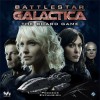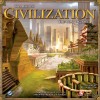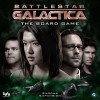
Huitzil
gamer level 4
2982 xp
2982 xp
followers
39
39
Use my invite URL to register (this will give me kudos)
https://boardgaming.com/register/?invited_by=huitzil
profile badges




recent achievements

Intermediate Reviewer
Review 8 games and receive a total of 380 positive review ratings.
Review 8 games and receive a total of 380 positive review ratings.

I Love Playin' Games
Claim that you have played a game today by clicking the "Played Today!" button on a game page 50 times.
Claim that you have played a game today by clicking the "Played Today!" button on a game page 50 times.

Viscount / Viscountess
Gain 25 total followers
Gain 25 total followers

Explorer - Level 2
Earn Explorer XP to level up by completing Explorer Quests!
Earn Explorer XP to level up by completing Explorer Quests!
Player Stats
Critic (lvl 2)
635 xp
635 xp
Explorer (lvl 2)
344 xp
344 xp
Professor (lvl 3)
770 xp
770 xp
Reporter (lvl 1)
120 xp
120 xp
About Me
I enjoy card, board, role-playing, and minis games. Complexity of rules is not a problem so long as they form a coherent and balanced whole, and I usually grasp rules systems pretty quickly and can explain them to others. My primary concern for games is that everyone playing them be able to have fun even when they aren't winning, and feel like they have a chance to win up to the very end -- I am amazingly unlucky, so this will come up for me a lot.










































Pandemic
Pandemic is a pure cooperative board game, putting players in the role of researchers, doctors, et cetera working for the CDC or WHO, trying to prevent the spread of four deadly new diseases (represented by colored wooden cubes) from wiping out mankind. The game board is split into four colored regions, corresponding to the four colors of disease that will proliferate there, and there are two decks with cards corresponding to each city on the board. Players use these cards to perform many of their actions: playing a card corresponding to a city lets you travel to there from any space on the board, FROM there to any space on the board, build a Research Center there, put that card into the hand of another player who is in that city with you, and discarding five cards of one color at a Research Center corresponding to that color allows the players to research a cure for that disease. Players can also move to an adjacent city, or treat disease in their city, without using any specific cards. Every turn, players get 4 actions to split any way they like among any of these actions. There are five different characters, each with a special ability that helps the player’s team out, often involving skipping or lowering costs for actions. Operations Expert doesn’t need to discard a card to build a Research Center, Dispatcher can move other players, Scientists need one fewer card to study a cure, and so on.
Meanwhile, multiple city cards are drawn from another “Infection” deck to indicate where the disease spreads to on each turn. Allowing too much disease to collect in one city has catastrophic effects — more than 3 disease cubes causes an outbreak, which means the disease spreads into EVERY adjacent city, which can trigger chain reactions. Worse yet, several “Epidemic” cards in the player deck cause the infection discard pile to be shuffled and placed on top of the deck, meaning the same cities will break out repeatedly. Eight outbreaks, and the game is over and humankind is doomed; same deal if a disease spreads so much there’s no more cubes of its color, or the player draw deck runs out.
Since Pandemic is a pure cooperative game, the only “opponent” is the infection deck (and its friends, the epidemic cards in the player draw deck). Without any room for an antagonist player to strategize, the pseudo-program the deck plays out has to be VERY hard to overcome, because it can’t adapt to your strategy or plan ahead. To win at Pandemic, you HAVE to play as a team. That’s why the people that love this game love it, and that’s why I hate it.
Other reviews for this and other co-op games will warn you to avoid “the general” or “co-op co-opt”, wherein one player takes charge and bosses around the other players to do what he wants. That makes a co-op game no fun and sort of pointless. The problem is, Pandemic is so purely cooperative it’s practically designed to create co-op co-opt. All information players have is freely sharable and there isn’t very much of it to keep track of. If the players don’t work in perfect concert according to the same gameplan, they are guaranteed to lose. If you’re in a group where some players are more experienced than others, then the choice presented to the group is: have the older players dictate every action for the new players, or lose quickly. If someone with a naturally aggressive personality is giving out orders, your options are: go along with the plan being forced on you, or lose because you aren’t cooperating enough. If two players disagree on a course of action, either one of them buckles right away, or you lose. There’s just not enough margin of error to accomodate player dissent. Even if everything goes perfectly and nobody is co-opting anyone’s experience, you don’t feel like you’re playing “your” character; you feel like you have a vote on all 4 characters and one of them happens to be the one you personally pick up and move.
Other games keep players distinct by having hidden information, or hidden traitors, or (in the case of Arkham Horror) just too much information per character for any one player to track. Pandemic has none of this. You’re not playing a character who works on a team — you play a member of a team who all have access to some characters. If there are any problems on that team, the game will do nothing to mitigate them. By the high ratings given to the game, you can tell it is the right game for some people. I just advise you to know what you’re getting into before you try it, and only do so if you really, really, really like co-op, and have a playgroup with no members that might speak over or dominate the others. If your playgroup isn’t this level, or you prefer being able to do your own thing and cultivate your own personal strategies in a game, stay away.